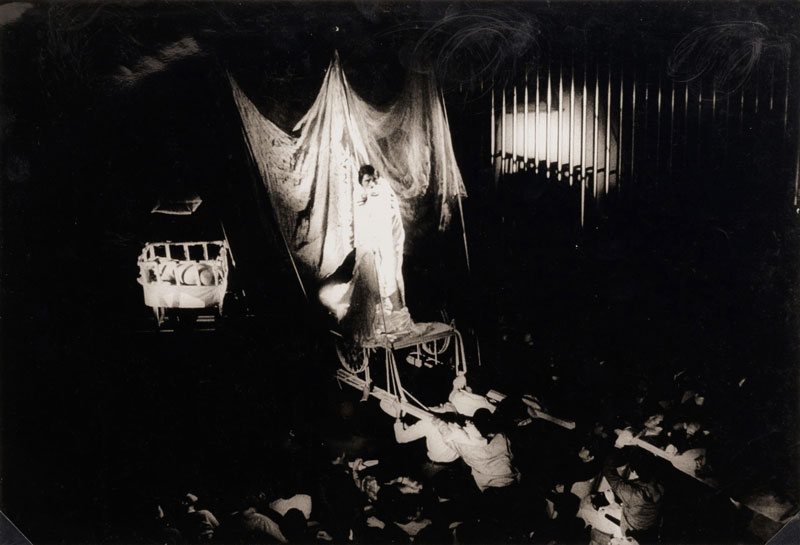
© Hijikata Tatsumi Archive
Pigs, Roman Emperors, and Go-Go Boots: Hijikata Tatsumi and the Revolution, Tokyo 1968
- 21 September 2023
- 6:00pm BST - 7:00pm BST
- Online
- https://www.sainsbury-institute.org/events/pigs-roman-emperors-and-go-go-boots-hijikata-tatsumi-and-the-revolution-tokyo-1968/
- 01603 597507
- sisjac@sainsbury-institute.org
- Tweet
THIRD THURSDAY LECTURE - SAINSBURY INSTITUTE
Professor William Marotti (UCLA)
About the Talk
This talk considers Hijikata’s seminal dance work, Hijikata Tatsumi and the Japanese: Revolt of the Flesh, within its 1968 context. Performed at the Japan Youth Hall on October 9-10, 1968, this work is regarded as both masterpiece and transition point. Yet there has been curiously little attention to its connection to surrounding events in the Shinjuku ward. Marotti argues that Hijikata’s performance is a site-specific work. It engages with the hall and its sponsoring association’s decades-long history in orchestrating rural youth and regional folk performance within a national and cultural sphere. It also connects with an insurgent politics of perception centered about Shinjuku Station. Hijikata explores and explodes these associations through the figure of Roman Emperor Heliogabalus, lord of misrule, and through a movement vocabulary of transgressively exaggerated gesture and sexuality.
About the Speaker
William Marotti is an Associate Professor of History and Chair of the East Asian Studies MA IDP Program at UCLA. He teaches modern Japanese history with an emphasis on everyday life and cultural-historical issues. Marotti’s Money, Trains and Guillotines: Art and Revolution in 1960s Japan (Duke University Press, 2013) addresses politics in Japan in the 1960s through a focus upon avant-garde artistic production and performance. His current book project, “The Art of Revolution: Politics and Aesthetic Dissent in Japan’s 1968,” analyzes cultural politics and oppositional practices in Japan with particular emphasis on 1968 as a global event.
